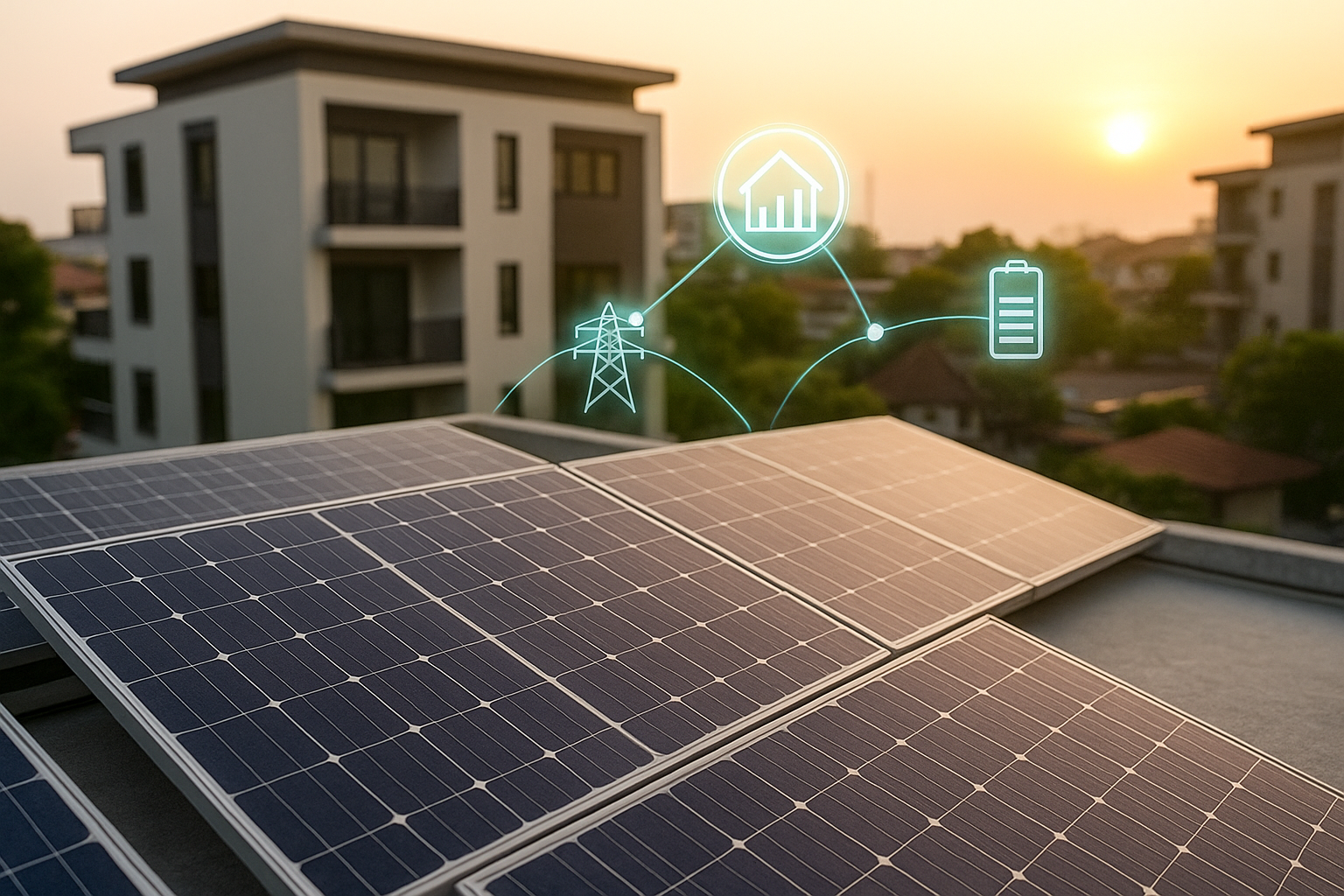How AI can align energy efficiency with environmental responsibility
The research identifies a key gap in current practice: the lack of integration between AI-driven operational control and holistic sustainability metrics. The author calls for an AI-based life-cycle intelligence layer, which would use predictive and adaptive algorithms to align day-to-day energy optimization with strategic decarbonization and circular economy goals.

A new study has found that artificial intelligence (AI) is becoming a decisive force in shaping the future of energy management and sustainable building systems. Published in Energies and titled "Towards Sustainable Buildings and Energy Communities: AI-Driven Transactive Energy, Smart Local Microgrids, and Life Cycle Integration," the research examines how AI-enabled energy frameworks can transform local energy communities and smart buildings into intelligent, self-optimizing systems that balance performance, cost, and sustainability.
The paper brings together nearly a decade of research and identifies how emerging AI architectures, particularly reinforcement learning, federated learning, and digital twin integration, are revolutionizing both Transactive Energy (TE) and Dynamic Energy Management (DEM) systems. The author argues that AI will be central to achieving the next generation of sustainable, resilient, and human-centered energy ecosystems.
Reinforcement learning redefines local energy autonomy
The study provides a detailed review of how reinforcement learning (RL) is reshaping distributed energy control and optimization. Traditional centralized energy management systems struggle with latency, scalability, and single-point vulnerabilities, limiting their ability to handle real-time fluctuations in distributed renewable resources. The author's review finds that RL and multi-agent systems can overcome these limits by enabling autonomous, decentralized decision-making within microgrids and energy communities.
In the reviewed systems, RL algorithms learn optimal strategies for power allocation, load balancing, and market bidding based on real-time conditions rather than fixed rules. This adaptability supports improved energy efficiency, demand-side flexibility, and seamless integration of renewable sources like solar and wind.
Notably, RL models excel in transactive energy systems, where energy prosumers, individuals or institutions that both produce and consume energy, can trade or share electricity within local networks. By combining predictive analytics with distributed optimization, AI agents ensure equitable and efficient energy distribution while reducing dependence on centralized utilities.
The study highlights that these adaptive frameworks enable energy self-sufficiency at the community level, making local microgrids more resilient against fluctuations in national grids or fossil-fuel-based power markets.
Bridging AI control and life cycle sustainability
The paper states that while most current research focuses on short-term efficiency, such as optimizing load profiles or reducing immediate emissions, future energy systems must integrate long-term sustainability goals through Life Cycle Assessment (LCA) and Life Cycle Costing (LCC) methodologies.
In this framework, AI plays a critical role in connecting short-term operations with long-term environmental impact. Digital twins, virtual replicas of physical systems, enable continuous tracking of material use, energy performance, and degradation patterns. When combined with AI forecasting models, these digital ecosystems can predict the future impact of design choices, maintenance cycles, and operational policies.
The research identifies a key gap in current practice: the lack of integration between AI-driven operational control and holistic sustainability metrics. The author calls for an AI-based life-cycle intelligence layer, which would use predictive and adaptive algorithms to align day-to-day energy optimization with strategic decarbonization and circular economy goals.
This integration of AI and sustainability ensures that efficiency does not come at the expense of ecological responsibility. By embedding life-cycle reasoning into the algorithmic core of energy management systems, smart buildings and microgrids can evolve into living, self-improving systems that sustain both people and the planet.
The path toward responsible, AI-driven energy ecosystems
The study offers a multi-layered AI integration framework for future energy management systems. The proposed architecture connects perception and prediction layers (for real-time monitoring) with control and coordination layers (for decision-making and optimization) and sustainability layers (for life-cycle assessment and environmental governance).
The author identifies several critical research directions that must be addressed to make this vision a reality. These include:
- Interoperability and data sharing across distributed energy agents.
- Explainable AI and transparency in algorithmic decision-making to ensure trust in autonomous systems.
- Cross-layer communication frameworks that link market-based transactive energy with dynamic control models.
- Integration of predictive life-cycle analysis into daily operations, enabling proactive energy planning.
The author also underscores the importance of federated and edge learning in managing privacy and data ownership within energy communities. By training models locally and sharing only abstracted insights, AI can achieve collective intelligence without compromising security or personal autonomy.
This decentralized approach to AI governance aligns with broader trends in responsible innovation, where technology is designed to enhance sustainability, inclusivity, and ethical stewardship. The author positions AI not merely as a computational tool but as a socio-technical enabler capable of supporting cooperative energy markets, community resilience, and environmental justice.
The authors envisions a future where smart buildings, energy communities, and local microgrids operate as self-learning ecosystems. Through constant interaction between physical systems and AI-driven digital twins, these entities will anticipate disruptions, optimize operations, and adapt to social and environmental change, forming the backbone of sustainable urban life in the coming decades.
- FIRST PUBLISHED IN:
- Devdiscourse









